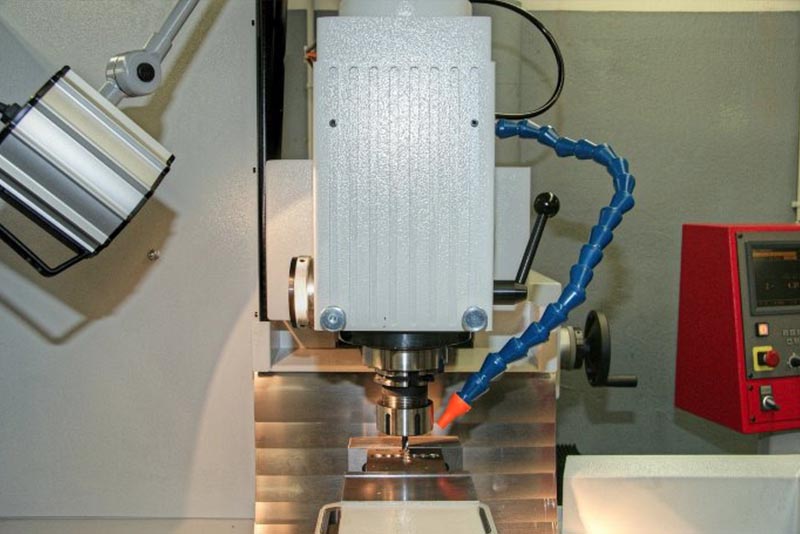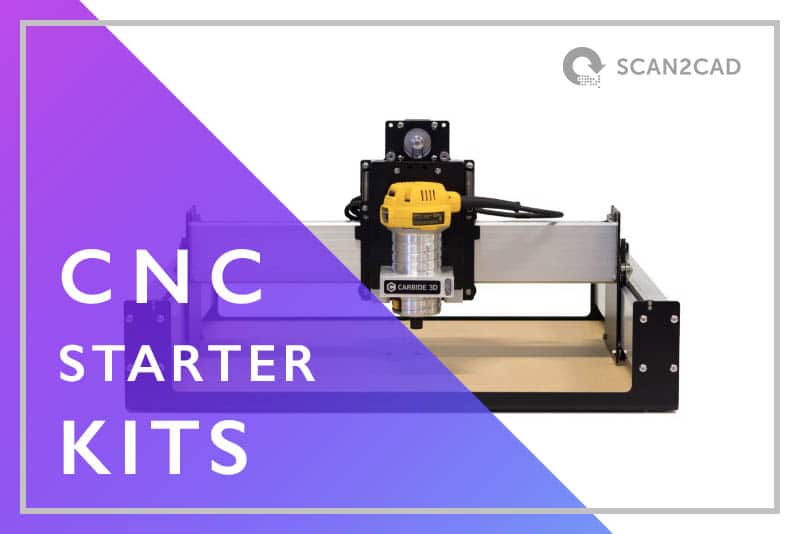CAD software goes hand in hand with CNC machining, enabling users to create a wealth of both industrial and creative products. CNC has become so ubiquitous and widespread—in the field of manufacturing and beyond—that it is unsurprising that a wide variety of different CNC machines exist. Each of these machines performs its own specific function and serves a distinct need. However, it can sometimes be somewhat difficult to untangle which machines are best suited to each specific situation.
In this article, we here at the Scan2CAD blog are aiming to provide a comprehensive guide to the diverse range of CNC machine types available. So, whether you’re a newcomer just trying to figure out what exactly each machine does, or a business owner seeking guidance on which hardware to invest in, you’ll find all the information you need in this handy rundown.
How CNC machining works
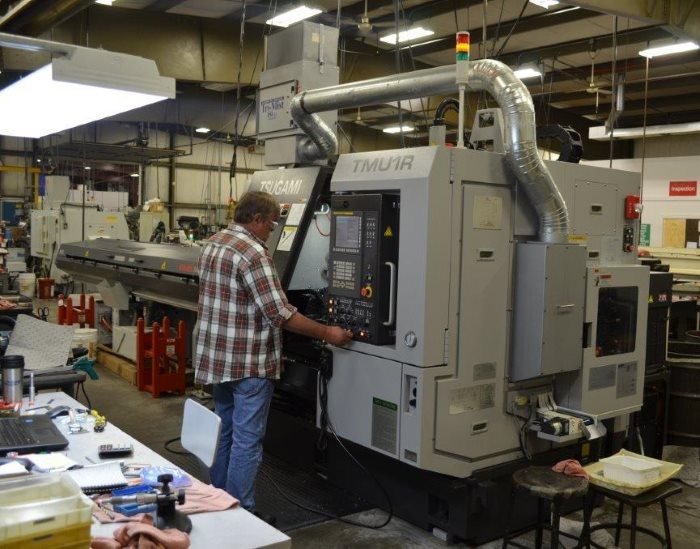
Though many types of CNC machine exist, all of them work by transforming a piece of material into a finished product by subtractive manufacturing techniques. In layman’s terms, this means that CNC machines work by removing material from the initial piece, rather than adding new material to it. To do this, they must execute a pre-programmed sequence of commands. Most commonly, they employ a programming language called G-code, though other languages exist for CNC, including Heidenhain, Mazak, and other proprietary formats.
G-code controls how a machine’s tool moves around the workspace, controlling its position on the X and Y axes, as well as its depth along the Z axis. It also controls the rate at which a tool moves, the speed at which it rotates, the type of motion required, and so on.
CAD and CAM software are crucial to the functioning of CNC machines, allowing ideas to go from design to CNC. The first step in creating a CNC-machined part or piece is the design phase. This may either be drafted directly in CAD software, created in a raster image program, or sketched on paper and scanned. In the latter two cases, users must convert their image for CNC by transforming their raster image into a vector. This is necessary as raster images are made up of pixels, whilst vector images are made up of mathematical coordinates. These coordinates can then easily be converted using CAM software into instructions for CNC machines to follow.
Types of CNC machines
Routers
Maslow turns the traditional CNC router on its side, offering 4’x8′ machining in your garage
CNC routers are one of the most common types of machine, and are a common sight in many workshops. Their primary purpose is to cut softer materials: wood, plastics, and softer metals such as aluminum. Typically, a CNC router is mounted on a stationary table, and tends to feature a large workspace. Nonetheless, a number of desktop-sized routers are now available on the market, bringing this powerful tool into smaller workshops.
Routers generally feature a spindle which moves in an X-Y-Z configuration. A router’s Y axis moves relative to the set table, its X axis moves relative to the Y axis, and its Z axis moves relative to the X axis. CNC routers are mostly designed to cut flatter materials, often come with a vacuum table, and are usually connected to a dust collection system. They operate at high speeds—around 18,000 RPMs or higher. Check out our user testimonial of Scan2CAD in signs and wood routing for an example of how one industry uses CNC routers.
Milling machines
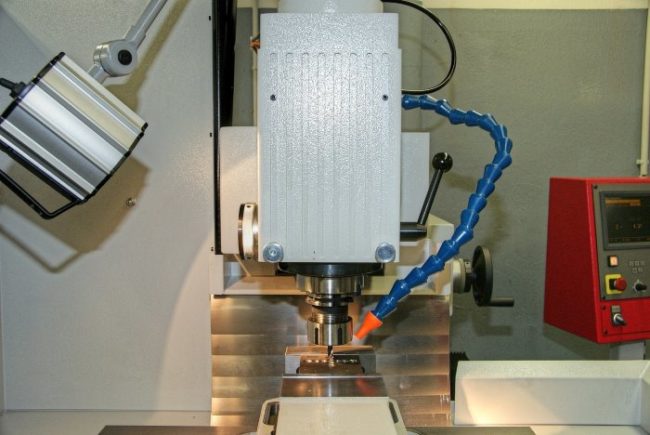
Mills are used to machine harder materials than routers
CNC milling machines perform essentially the same function as CNC routers. Nonetheless, there are several important differences between these two types of CNC machines. Firstly, where routers are mostly used to cut through softer materials, milling machines are generally used to cut metals. Though they also use rotary cutting tools, their speeds are much slower, at around 1,000 RPMs or fewer.
Unlike routers, which feature a stationary table, milling machine tables generally move in an X-Y configuration. As a result, this limits the size of the X-Y workspace. The machine’s spindle, meanwhile, moves on a linear axis above the piece, allowing for a larger clearance on the Z axis. This also allows milling machines to cut through thicker materials, and makes them suitable for cutting irregular pieces and varied shapes.
Lathes
Both routers and milling machines involve a moving tool cutting down a stationary part. Lathes work according to the opposite principle: the lathe rotates the workpiece against a stationary cutting tool. As such, lathes are used for creating cylindrical, spherical, or domed pieces. During machining, the piece is fixed into place and rotated, whilst the cutting tool only controls the depth of the cut. Parts created with a lathe are therefore generally symmetrical.
Both horizontally- and vertically-configured lathes are available. These machines perform roughly the same function: a vertical lathe is essentially an upended version of its horizontal counterpart. Vertical lathes are suitable for heavier, larger, and more awkward-shaped pieces, and tend to feature a smaller footprint. However, chip clearance is easier with horizontal lathes, as gravity alone is on your side. Horizontal lathes are also more suitable for long bore work, and are generally more rigid and vibrate less.
Plasma cutters
GoodEnoughCNC is a combined plasma cutter, laser cutter and mill
A CNC plasma cutter works by cutting through electrically conductive materials using a jet of hot plasma. The plasma used is created by the machine from a compressed gas, typically composed of oxygen, air, and other substances. As the jet of plasma cuts through the material, it forms an electrical circuit back to the cutter. The electricity conducted through this plasma creates the necessary heat to melt through the workpiece.
When compared to traditional metal cutting implements, plasma cutters provide cleaner cuts and finishes. Plasma cutters are perfect for cutting through sheet metal, metal plates, bolts, and pipes, amongst many other metal objects.
Laser cutters
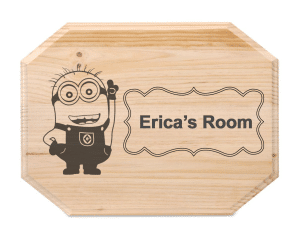
As well as cutting, CNC laser machines can also be used for engraving, as in this plaque
In a similar vein to plasma cutters, CNC laser cutters work by focusing a laser beam onto the workpiece. This laser beam then melts, burns or vaporizes the material. Unlike plasma cutters, which are generally used to cut through metal, laser cutters are used with a wide range of materials, including wood and plastic. As an example, you can even create your own laser-etched plaque from wood using a laser cutter.
CNC laser cutters are more precise and use less energy than plasma cutters when cutting through sheets of steel or aluminum. However, whilst plasma cutters are adept at cutting through materials of different thickness, laser cutters are not as well suited to cutting through thicker sheets of metal. However, both plasma and laser cutters have a diverse range of applications: on our blog, we’ve previously featured the work of David Mayne, who uses both machines to create works of sculpture art.
Waterjet cutters
Wazer: the first desktop waterjet cutter
Standing alongside plasma torches and laser beams, a jet of water may not seem an obvious candidate for machining. However, waterjet cutters have an important place in heavy industry. They work by blasting the workpiece with a high pressure jet of water, which may or may not be mixed with an abrasive. Water-only machines are often used to cut through softer materials, such as wood or rubber, whilst abrasive jets are capable of cutting through stone and steel. On our blog, we previously featured Sanders Reproduction Glass, who used Scan2CAD to convert their designs to CNC profiles, and then used waterjet cutters to cut these designs into glass.
There are several advantages to choosing waterjet cutters over plasma or laser cutters. Firstly, waterjet cutters are considered to be more environmentally friendly, and often use little water. Meanwhile, they are still capable of cutting through harder materials, and do so to a high degree of accuracy—to within around 0.13mm. They also avoid the heat-related warping that can occur when using laser or plasma cutters, helping keep the workpiece intact.
Though heavy industry tends to be the biggest user of waterjet cutters, desktop versions of these machines are now coming onto the market. In our monthly CAD blog, World of CAD, we covered the launch of Wazer, billed as “The First Desktop Waterjet Cutter”. With these smaller sizes has come increasing user-friendliness, and waterjet cutters can now be operated with the same ease as the routers and mills we’re all familiar with.
Electrical discharge machining
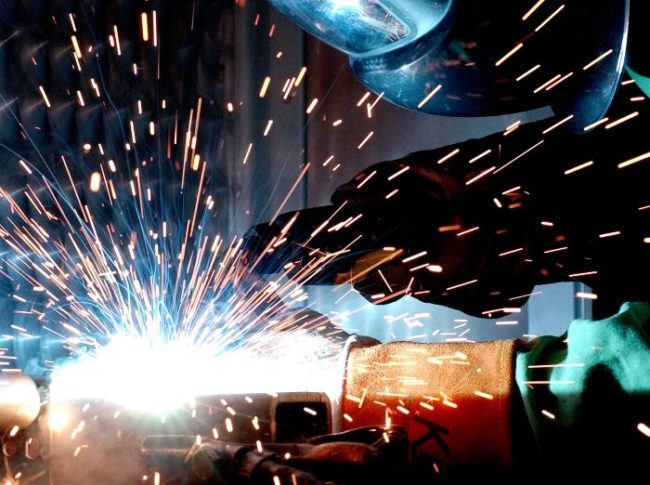
Electrical discharge machines use sparks to weld or cut through electrically conductive materials
Commonly referred to as spark machining, electrical discharge machining (EDM) works by removing material from the workpiece using a series of electrical discharges (sparks). These discharges rapidly occur between two electrodes separated by a dielectric fluid and subject to an electric voltage.
There are two main processes by which EDM occurs. The first is wire EDM. In this process, a single-strand metal wire, together with de-ionized water, cuts through metal using heat from electrical sparks. Wire EDM allows users to machine complex parts from hard, conductive materials.
The second process is sinker EDM. In this process, two metal parts, submerged in an insulating liquid, are connected to a source of current. When the current is on, there is electric tension between the two metal parts. Bringing these parts together causes the tension to discharge, and a spark jumps between them. This spark causes the metal part to heat up to the point where it melts.
Machinists typically use EDM with hard metals which may be difficult to machine using other techniques. Common applications of EDM are in the mold-making and die industries. Increasingly, the aerospace, automobile and electronics industries are also turning to EDM for low-volume prototype and production parts.
Grinding machines
Whereas the other types of CNC machines listed here are primarily used to make cuts into a workpiece, the primary application of grinding machines is to create a fine finish. A wide array of CNC grinding machines exist, each serving a distinct purpose.
Surface grinders help create a smooth finish on a flat surface by removing impurities and the oxide layer. Meanwhile, cylindrical grinders work in a way that is analogous to a lathe, and improve the surface of cylindrical surfaces. Tool and cutter grinders differ in that they help to sharpen milling cutters and tool bits. To create tools themselves, a machinist may use a 5 axis grinder.
Multiaxis CNC machines
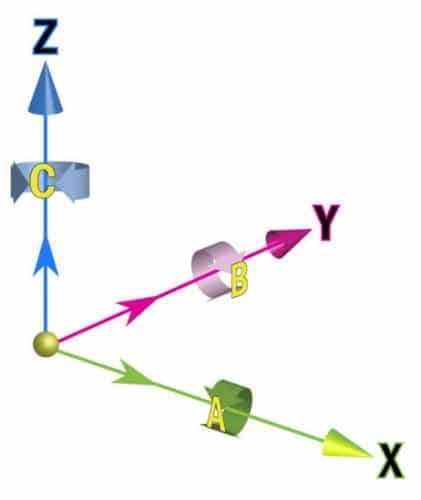
As well as the standard X, Y and Z axes, multiaxis machines feature additional rotational axes
Recently, CNC machines have moved beyond the traditional 3 axes and are now capable of multiaxis machining. This means that they are able to perform rotational motion as well as translational motion. Multiaxis machines can operate on as few as 4 axes up to as many as 9. This reduces the need to manually turn a workpiece during machining, and allows for better surface finishes and more complex parts.
Many different types of CNC machines now have multiaxis variants, including routers, mills, and grinders. These additional axes increase the speed of production, and “gets us closer to the done-in-one goal than any other process”. Nonetheless, these machines feature more moving parts than 3-axis machines, meaning more wear and tear and bringing the chance of collisions.
Non-subtractive CNC machines
Plotters
XPlotter is a hybrid machine which combines plotting, pick-and-place, and other technologies
We recently featured plotters in our article covering CAD in the world of art. Plotters are a longstanding form of CNC machine, and function as a mechanical printing device. They follow computer-generated instructions, and guide a pen, brush, or other drawing tool across a surface. Though inkjet printers have superseded these machines in many ways, plotters are still present. In fact, January 2017 saw the launch of the XPlotter, a CNC machine which combines plotting, cutting, engraving and pick-and-place technologies—proving that plotting isn’t dead yet.
Pick and place machines
One of the lesser known types of CNC machines, pick and place machines do what they say on the tin. Using a vacuum, they pick up a component, and then move it into a desired position by following G-code. Also referred to as surface mount technology, these machines are primarily used in the manufacture of printed circuit boards. They operate at very high speeds, allowing for the rapid manufacturing of PCBs.
Other machines
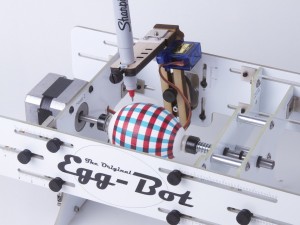
The same basic principles of CNC apply to a vast range of different machines. These include more traditional manufacturing machines, such as oxy-fuel welders and cutters, and some more unexpected tools, such as embroidery machines. One innovative example is the Egg-Bot, which allows users to print onto spherical and egg-shaped objects.
CNC machines vs 3D printers
BoXZY combines 3D printing with CNC machining
A further example of a machine that operates according to numerical controls is a 3D printer. However, it is not generally considered a “CNC machine”. The term “CNC machine” is generally reserved for machines which carry out subtractive manufacturing operations—i.e., which remove material from a workpiece. 3D printers, meanwhile, are additive in nature, and create parts by gradually building them up using new material.
Many types of 3D printer do, however, share a similar basic set up to a CNC mill. They also operate by following computer-generated code, whereby the tool moves to a specific coordinate in order to manufacture a part. However, 3D printing differs from CNC in many ways. For starters, it’s possible to use a 3D printer to create a part with multiple materials—and multicolor 3D printing is now available too. Secondly, as 3D printing is an additive process, there is much less material wastage than in CNC. CNC mills, however, can offer a higher speed of production, and can often work with a wider range of materials.
CNC machining and 3D printing are, in effect, two sides of the same coin, and can complement each other well in manufacturing. As such, a number of new CNC innovations are being produced, creating machines which merge additive and subtractive technologies. Examples of this include the Tongtai AMH-350 and Optimus from Febtop Tech, both of which recently featured in World of CAD XI.
Which machine should I choose?
When deciding to invest in a CNC machine, it’s important to be realistic about what you hope to achieve with it, as well as what your budget is. Think about the materials you’re planning to machine, the parts you wish to produce, and the size of your workshop, amongst other relevant factors to you.
If you’re looking to build your own CNC machine, then our guide to the best CNC kits for beginners can help serve as a useful starting point to some of the best available kits on the market.
Interested in learning more about the world of CNC? Check out the CNC section of the Scan2CAD blog.

